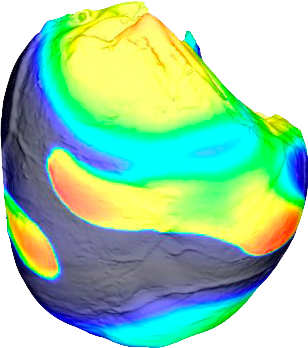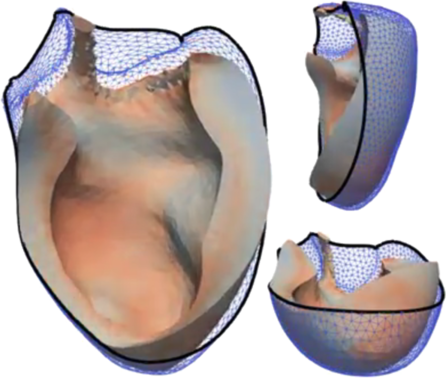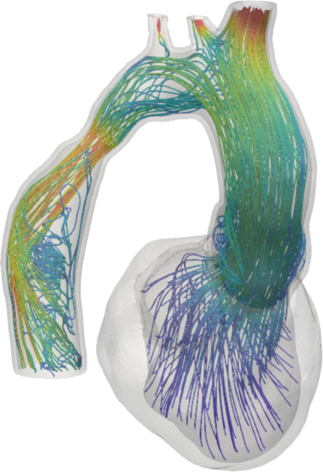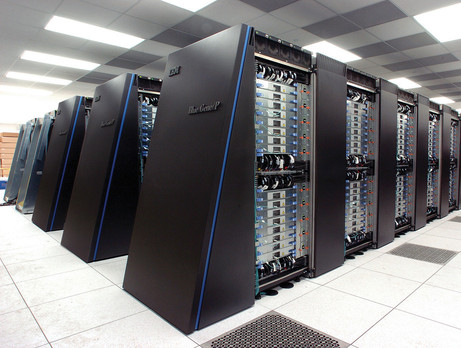Computational Modeling and Simulation
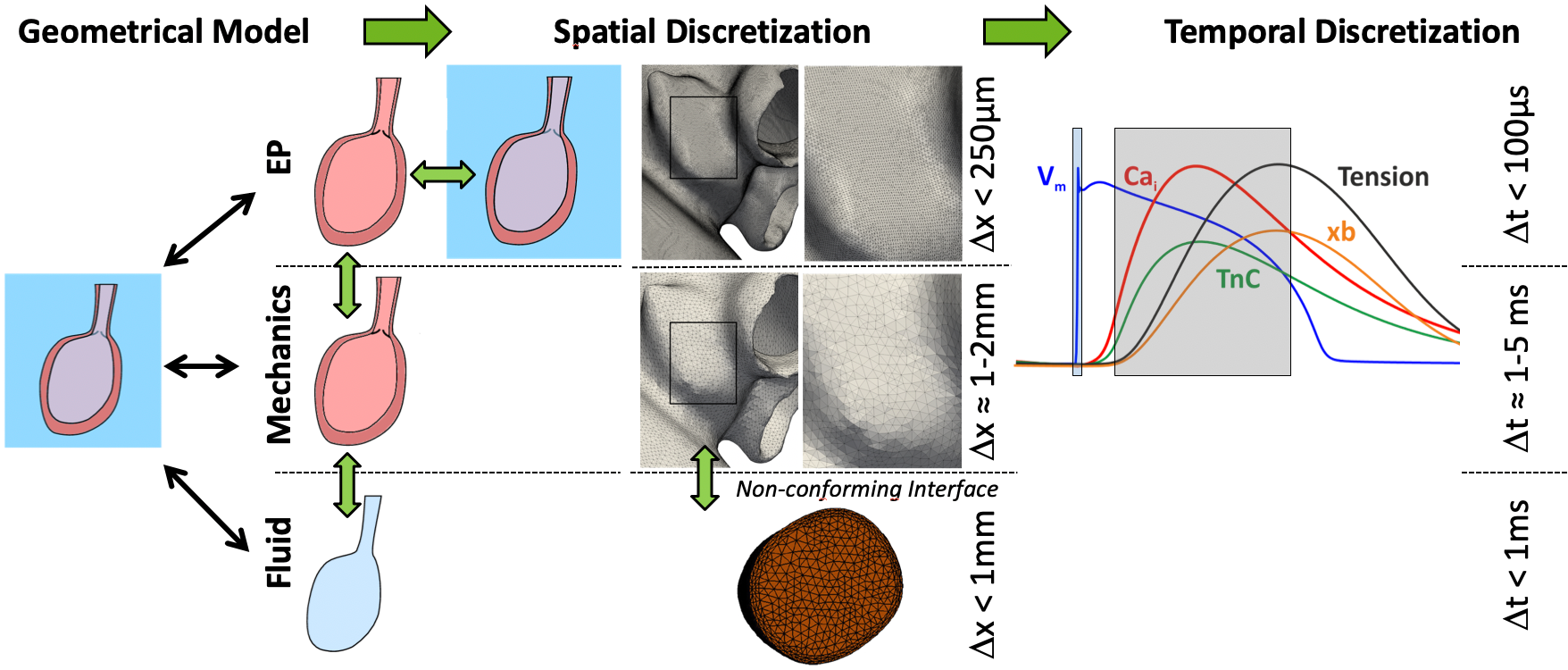
Figure: Methodological research on building personalized models of total heart function
Methods-driven research focusing on the development of in silico models of
total heart function
is a key activity within the CCL.
Beyond addressing the challenges posed by modeling individual physics - electrophysiology, mechanics and hemodynamics -
in isolation which are largely due to multiscale aspects of cardiac function,
an important focus are issue arising when coupling these in a multiphysics context
as the spatio-temporal characteristics of the individual physics are markedly different.
Moreover, research on efficient and robust workflows for building geometrically
accurate anatomical models
from tomographically reconstructed images
and their personalization
- the identification of parameters to minimize differences between clinical observation
and in silico models - is of pivotal importance for leveraging modeling and simulation
in both as an industrially applied
medical device development tool (MDDT)
to design and optimization enhanced cardiac devices
as well as using
software as a medical device (SaMD)
for diagnostic and therapeutic applications in the clinic.

